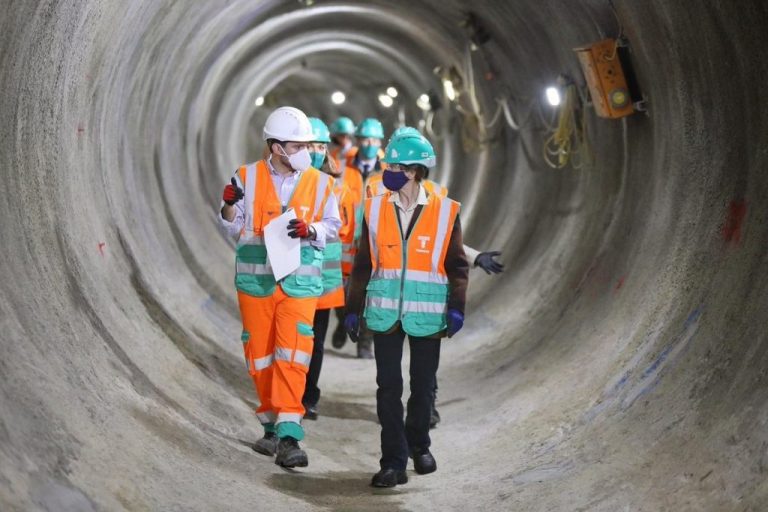The removal of most Covid restrictions in the UK has increased calls for clearer practical guidance and the setting of specific indoor air quality (IAQ) contaminant targets to support the health and wellbeing of building occupants. The Building Engineering Services Association (BESA) has, therefore, produced a concise guide to good practice: ‘Indoor Air Quality for Health & Well-Being’, which is designed to help building owners, managers and engineers interpret IAQ data and turn it into useful strategies for improving the indoor environment. The UK’s chief scientific officer Sir Patrick Vallance and the British Medical Association (BMA) have emphasised the role of building ventilation and IAQ in helping the country navigate the next stage of the pandemic. The BSI is also fast-tracking a new British Standard that will help to define the UK’s future approach to IAQ. The BMA, which represents all UK doctors, says setting legal standards for ventilation, should be part of the government’s strategy for dealing with the next stage of the pandemic. It added that financial support for businesses and educational settings should be made available “to implement these requirements ahead of the autumn and winter period, when respiratory viruses spread more easily and buildings must be kept warm, limiting options for natural ventilation”. The new BESA guidance, which is part of the Association’s wider Buildings as Safe Havens (BASH) campaign, sets out target limits for a range of airborne contaminants in a variety of indoor spaces. It explains how air quality data gathered during specialist surveys or from the wide range of low cost real-time and continuous IAQ monitoring devices, can be interpreted and acted upon. Achievable The advice it provides is also based on the experience of practitioners in the field who see what is possible and achievable in the real world. It is designed as a follow-up to the BESA publication H&W001: A Beginners Guide to Indoor Air Quality published in March in collaboration with Mitsubishi Electric. Public Health England estimates the annual death toll in the UK from air pollution at between 24,000 and 36,000 with associated healthcare costs as high as £20bn. The role played by indoor air both in transmission of disease and the general health and wellbeing of building occupants became headline news during the pandemic and has prompted unprecedented interest in how buildings are ventilated. The BESA Guide has also been produced in the wake of a report commissioned by the government’s chief scientific adviser Sir Patrick Vallance, which highlighted the importance of building ventilation in reducing the risk of Covid-19 and other infections. The report was published by the National Engineering Policy Centre (NEPC), which is a group of 43 professional engineering organisations representing 450,000 engineers. It found that ventilation was often neglected, and that the Covid-19 crisis had revealed flaws in the design, management, and operation of buildings. It advised Sir Patrick that, unless these flaws were addressed, they could disrupt the management of this and future pandemics and impose high financial and health costs on society. Nathan Wood, chair of the BESA Health & Wellbeing in Buildings group, said this was a significant moment for anyone working to improve the indoor environment. “The very fact that such a senior adviser is taking a close interest in how the engineering profession can be deployed to tackle a health and wellbeing issue shows just how high this has risen up the political agenda,” he said. “People now need reassurance that buildings are being adequately ventilated, and the air monitored to minimise the threat from contaminants and viruses. This new BESA Guide aims to do just that, but it also goes further. “Rather than purely focusing on preventing infection and death, which is often the approach of academic and regulatory work, it also promotes a positive approach to setting IAQ standards that will give people a healthier, more comfortable, and more productive experience inside buildings.” He pointed to research carried out by Harvard University in the US that showed a 61% improvement in cognitive function for students in a well-ventilated, clean environment. “The outdoor, ambient air pollution guidance levels adopted by governments are usually based on mortality and morbidity, tempered by what is regarded as economically feasible. That compromise reduces investment in the health and wellbeing benefits,” added Wood. Enjoyment “By contrast, a health and wellbeing approach considers how good IAQ can improve productivity and enjoyment of a space and supports the principle that people should be able to inhabit ‘safe havens’ where the indoor air is better than the polluted outdoors. Unfortunately, in too many cases, the opposite is currently true.” The BESA Guide refers to established guidelines including those provided by the World Health Organisation (WHO), which are due to be updated later this year. It also signposts other sources of authoritative advice on volatile organic compounds, formaldehyde, nitrogen dioxide/oxides, ozone, radon, and airborne micro-organisms. It also recommends monitoring CO2 and a range of IAQ factors to balance good air quality with reduction of internally and externally sourced contaminants. Its guidance will also be offered to the BSI to help shape the draft BS40101 ‘Building performance evaluation of occupied and operational buildings’, which is due to be published in November and is currently the subject of a public consultation. “I would like to thank the amazing people who contributed so much of their time and expertise to the preparation of this guidance, particularly Douglas Booker, Craig Booth, Peter Dyment, and Shaun Hill; supported by the wider membership and staff of BESA,” said Wood. The guidance can be downloaded for free here.













